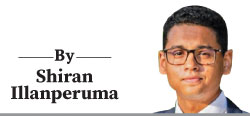 On February 17, 2025 President Anura Kumara Dissanayake delivered his maiden Budget speech. Dissanayake who is both President and Finance Minister, said that the Budget was based on principles of productive growth, active public engagement, and equitable distribution.
On February 17, 2025 President Anura Kumara Dissanayake delivered his maiden Budget speech. Dissanayake who is both President and Finance Minister, said that the Budget was based on principles of productive growth, active public engagement, and equitable distribution.
This much-anticipated Budget is the first since the country held Presidential and parliamentary elections in late 2024 during which voters rejected the mainstream ruling parties and placed their hopes in the National People’s Power (NPP). The latter is a relatively new political formation consisting of various civil society groups and anchored by its core party the Janatha Vimukthi Peramuna (JVP).
While Sri Lanka has elected a new President and Government, its policy space remains restricted by its 17th support package from the International Monetary Fund (IMF), which was entered into by the former Government. At a panel discussion held a few days after his Budget speech, Dissanayake said, “Our economy is running on conditions. There is no economic independence or sovereignty – it is under probation and being monitored’. This is a stark admission from Dissanayake, whose Government has so far backed down from its campaign promise of renegotiating the unfavourable debt restructuring agreement brokered by the IMF.
The NPP Government’s Budget proposals remain committed to a path of fiscal consolidation. This is evidenced by the fact that total Government revenue is projected to increase by 23 percent(mainly through indirect taxes), while Government expenditure will increase at a much lower rate of 13 percent. Despite this, there is an anticipated Budget deficit of 6.7 percent of the GDP, well above the IMF’s recommended target of 5.2 percent for the country. This is reflective of the political infeasibility of the IMF’s ambitious and often brutal austerity programs.
One of the primary reasons for the Government missing the IMF’s deficit target appears to be the resumption of public capital investment. The latter was previously gutted under the former administration led by the centre-right Ranil Wickremesinghe. Dissanayake’s Government aims to increase public investment from 13 percent of Government expenditure in 2024 to 18 percent in 2025. This will be especially necessary if the NPP is to implement any of its campaign promises, let alone reach its growth target of 5 percent.
The reality is that most economists in Sri Lanka take Budget proposals with a pinch of salt, especially when formulated in the context of IMF guardrails. If under pressure to meet the IMF’s revenue targets, public investment will be the first line of expenditure to be slashed. Meanwhile, the actual lion’s share of Government spending will continue to go towards interest payments that will make up 41 percent of total expenditure in 2025.
Sri Lanka had one of the highest interest burdens in the world before defaulting on its external debt in 2022. This was mainly due to high-interest debts owed to private creditors such as Black Rock and Ashmore. While the G20 has a Common Framework for restructuring the debts of low-income countries, there is no such framework for middle-income countries like Sri Lanka. According to the IMF’s own projections, the debt restructuring deal that they have brokered for the country will see it carrying a public debt-to-GDP burden of around 95 percentin 2032.
Sri Lanka’s dilemma reflects broader trends in the Global South. A 2023 United Nations (UN) study titled A World of Debt found that developing countries owed a collective 29 trillion US dollars in public debt. Though this debt is a fraction of that owed by industrialised countries, developing-country debt is growing twice as fast and is borrowed at interest rates that are significantly higher. In fact, research by the non-profit ONE Campaign points out that the Global South now spends more in debt payments than it receives in grants and loans.
The other side of this debt trap is the fact that many of the countries in the Global South are cursed with low growth rates due to a lack of investment. The UN estimates that there is a four-trillion US dollar investment gap just for developing countries to meet the Sustainable Development Goals by 2030. This provoked UN Secretary-General António Guterres to call for a “surge in investment” back in April 2024.
The problem is that such investment is simply not forthcoming in the current international economic order dominated by the Global North and the Bretton Woods institutions. Since the start of the Third Great Depression (triggered by the 2007 financial crisis in the US), foreign direct investment (FDI) has simply not kept pace with GDP and trade growth. What little FDI remains is predominantly in the service sector – according to UN Trade and Development, services accounted for 81 percent of new foreign investment projects between 2020 and 2023.
In the meantime, the existing multilateral financing framework is not doing its job – or perhaps it is doing it too well. Institutions such as the World Bank are dominated by the United States, and their lending patterns often come attached to policy conditions. The latter frequently violate economic sovereignty and discourage the kinds of state-led economic interventions needed to drive structural transformation in the Global South. As a result, these institutions exist to maintain international inequality that stems from the division of labour between the Global North and Global South.
Making way for the new wing is gloating over the conservative approach of the new Budget proposals. Harsha de Silva, a Member of Parliament representing the centre-right opposition party Samagi Jana Balawegaya, called the Budget a ‘victory’ as it signalled continuity with the neoliberal reform project. Murtaza Jafferjee, a Sri Lankan stockbroker and chairman of a libertarian think tank affiliated with the neoliberal Atlas Network – has called the Budget ‘market-oriented and pro-business’.
These comments, perhaps intended to disorient and demoralise those who expected a more radical change under the NPP Government, are not entirely false. They speak to a much larger problem faced by Governments which promise a break from the drudgery of austerity and then find themselves rendered immobile by the system. This is partly political, reflecting a failure to educate and mobilise the masses on the roots of the crisis. But it is also theoretical, reflecting a lack of new ideas or, at the very least, a lack of confidence in alternative approaches.
The NPP Government’s attempt to raise the share of public investment in Government expenditure, even within the context of the IMF straitjacket, reflects a basic awareness that investment is needed to grow out of the debt trap and meaningfully address social issues. Indeed, there is compelling evidence of a high correlation between GDP growth and investment in fixed capital (that is, assets such as infrastructure and machinery that have a bearing on the real economy).
Investment in the manufacturing sector is key to technological upgrading, upskilling labour, and unlocking rapid growth in the Global South. In fact, data from the UN Industrial Development Organisation shows that 64 percent of growth episodes in the last fifty years were fuelled by the rapid development of the manufacturing sector. It is hard to imagine any meaningful and integrated development without manufacturing. This is why there appears to be a renewed push for industrialisation across many countries in the Global South – from President Lula da Silva’s New Industry Brazil (Nova Indústria Brasil/NIB) program to the Made in China 2025 program. It is unlikely that any Government in Sri Lanka can formulate and implement such cohesive plans without confronting the IMF and private creditors which have severely restricted the country’s economic sovereignty.
The drive towards industrialisation is intimately tied to the history of national liberation struggles in the Global South, which sought to forge an independent path towards modernisation. In 1956, the socialist William de Silva articulated this aspiration for sovereign modernisation in his policy statement as the industries minister in Sri Lanka’s first nationalist Government:
‘In our country, industry has hitherto been accorded the treatment generally meted out to an unwanted child. The imperialist-imposed international division of labour, whereby the colonial countries remained as agricultural appendages, was regarded… as an absolute law of nature. But like all other historical phenomena, this old division of labour is decaying and making way for the new’.
This article originally appeared in Globetrotter








